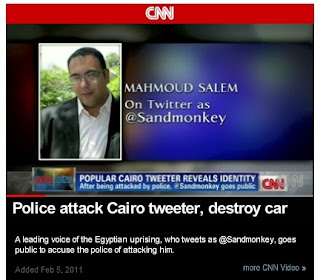 |
| So-called sports analysts are now building up their case why Pacman did not deliver a KO. |
The weather was cooperative Sunday morning in Manila. The skies were somber gray, the heat wasn't as oppressive as the past days--the hottest recorded so far in Manila according to news reports--and the air was cool. It's all because a storm locally called "Bebeng", "Aere" to the rest of the tropical world, was on its way towards the north of the Philippine archipelago. We didn't know that it has started lashing the southern provinces in the Visayas and the Bicol region.
"Bebeng" would arrive in Manila an hour after WBO welterweight champion Manny Pacquiao shamed challenger 'Sugar' Shane Mosley after a lackluster 12-round bout at the MGM Grand Garden Arena in Las Vegas, Nevada.
 |
| Cool day for watching, but there was not much to get excited. |
We watched the fight live for free at the Camp Aguinaldo grandstand, which military personnel and their dependents started filling up very early after breakfast. It didn't matter if were viewing pixelated images on a medium-size screen mounted on the side of a covered van.
 |
| Free live view at the Camp Aguinaldo grandstand/parade grounds. |
The fight was boring though. There were only two instances that got the crowd excited. There was loud cheering when Pacman knocked down Mosley in the third round, and booing when the referee mistakenly gave the counts to the Pinoy champ who hit the floor in the 10th because he lost his balance.
 |
| This was the only instance when the crowd stood up to cheer! |
We'd learn later that the Pacman felt the cramps ('cram' said he in his post-fight 'you know' interviews) in his left leg, reason why he could not go for the finish after the 3rd round.
Now they're talking about another fight sometime in November may be against Marquez. Or Mayweather?
There was something about his dream to 'end poverty' in the Philippines, that's why he was inviting every fan to wear yellow during the event to match his yellow gloves, yellow being the color of the Aquino administration.
Political colors? Well, he was also wearing something blue. His shorts were blue. Defeated vice-presidential candidate and soon-to-be Aquino chief of staff (according to political rumorists) Mar Roxas wore blue during the yellow election campaign.
The champion happens to be the congressman of Sarangani province, and as of the latest who-is-the-richest-legislator monitor, he now tops the list being a billionaire from his very transparent source of income, the boxing ring.
This latest fight nets him at least $20-million, and Mosley gets just about $5-million in his purse.
This latest fight nets him at least $20-million, and Mosley gets just about $5-million in his purse.
Sunday was Mother's Day. Pacman's mommy Dionisia was in prayer throughout the fight; she watched the replay. She said she got mad at Mosley for pushing his son to the floor. Again, she told his son--through the press--to end his boxing career.
Her birthday is around the corner. Everybody knows that she wishes to get a green Hermes bag from the 'pambansang kamao' (the national fist). She'll get that for sure because she asked her daughter-in-law Jinkee to tell that to her son.
Paris Hilton enjoyed the show. We did not. It was just a ho-hum sparring match.
By the way, the self-appointed sports analysts in the Philippines who did their usual forecasts before the event and live biased coverages during the show are still at it, and this time as tropical storm 'Bebeng' is soaking MetroManila with heavy rains, they're getting their high doing 'post-mortem' diagnosis why Pacman did not deliver a KO.







































